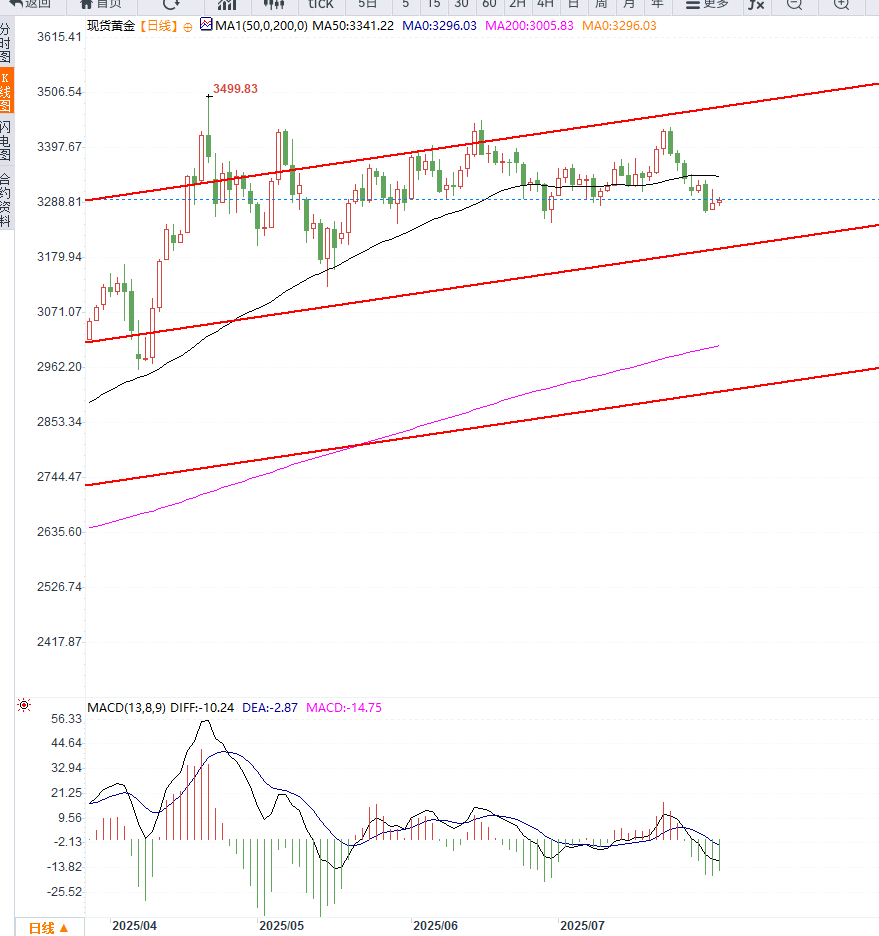The strong dollar and the hawkish stance of the Federal Reserve suppressed gold prices. Gold fell for the third consecutive week, waiting for the release of non-farm payroll data.
2025-08-01 14:10:03
The Federal Reserve's latest hawkish stance has caused the market to reassess the timetable for rate cuts, thereby boosting demand for the US dollar and suppressing gold, an interest-free asset.

The US dollar index rose for the seventh consecutive day, reaching a new high since late May, further weakening gold's appeal. Key to driving the dollar was the latest inflation data: the US PCE price index rose to 2.6% year-on-year in June, while the core index remained stable at 2.8%, exceeding market expectations and reinforcing the view that inflation is persistent.
"Both inflation data and GDP show that the U.S. economy remains resilient, which gives the Fed no reason to rush to ease," said a Fed watcher. "This limits the short-term performance of gold as a hedge."
Meanwhile, US President Trump signed an executive order on Thursday imposing import tariffs ranging from 10% to 41% on several trading partners, including Asian countries. Countries with trade deficits will face tariffs of at least 15%. This move has heightened global trade concerns, boosted market demand for risk aversion, and provided some support for gold.
Despite this, gold prices remain mired in a downward trend. Investors are generally remaining on the sidelines, awaiting Friday's release of the US July non-farm payroll report. This data is seen as a key indicator of economic resilience and the outlook for interest rates. It is expected that employment will increase by 110,000, with the unemployment rate rising slightly to 4.2%.
The daily gold chart shows that prices are currently in a weak consolidation phase, constrained by key resistance near $3,320. If gold fails to break through this area, there is a risk of further short-term declines. Stronger resistance is seen above $3,350. If it breaks through with strong volume, it could trigger a rebound towards the $3,380 area and further above the $3,400 mark.
On the downside, the 100-day moving average provides initial support around 3,270. A break below this level could trigger further downward pressure, targeting the 3,240 area, the June low. A further break below this level would target the psychological level of 3,200.
In terms of indicators, the MACD death cross continues and the red column shortens, indicating that the short momentum has weakened but not reversed; the RSI is running in the neutral and weak area and is not obviously oversold.

Editor's opinion:
Gold is currently trending in a "structurally bearish, sentiment-supported" pattern. Despite rising trade tensions and global risk aversion, the Federal Reserve's vigilance against inflation and a strong dollar are clearly suppressing prices.
If the July non-farm payroll data is strong, gold may further test the technical support area; on the contrary, if the data is weak or the US dollar pulls back, gold prices are expected to launch a technical rebound.
- Risk Warning and Disclaimer
- The market involves risk, and trading may not be suitable for all investors. This article is for reference only and does not constitute personal investment advice, nor does it take into account certain users’ specific investment objectives, financial situation, or other needs. Any investment decisions made based on this information are at your own risk.





















